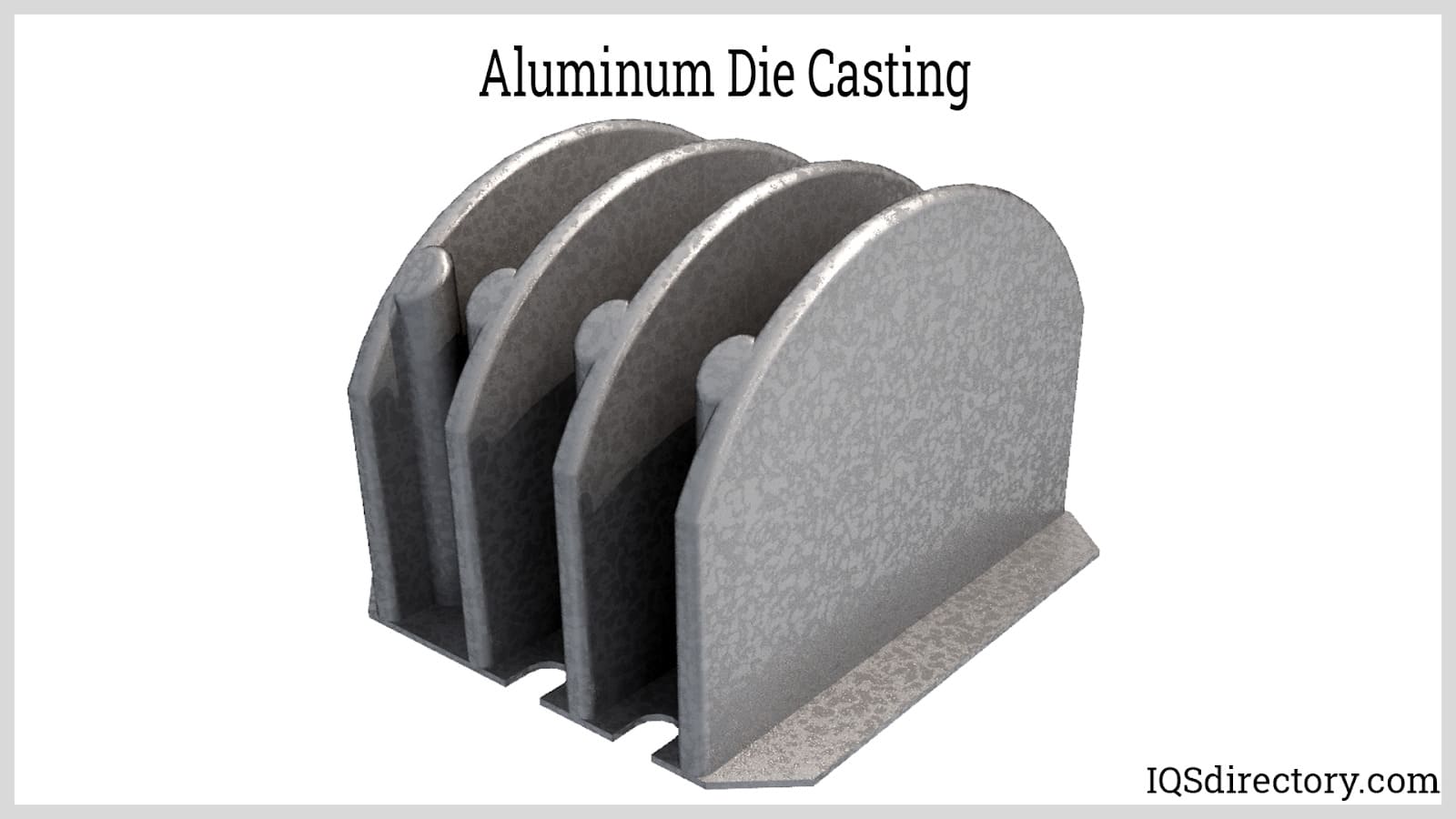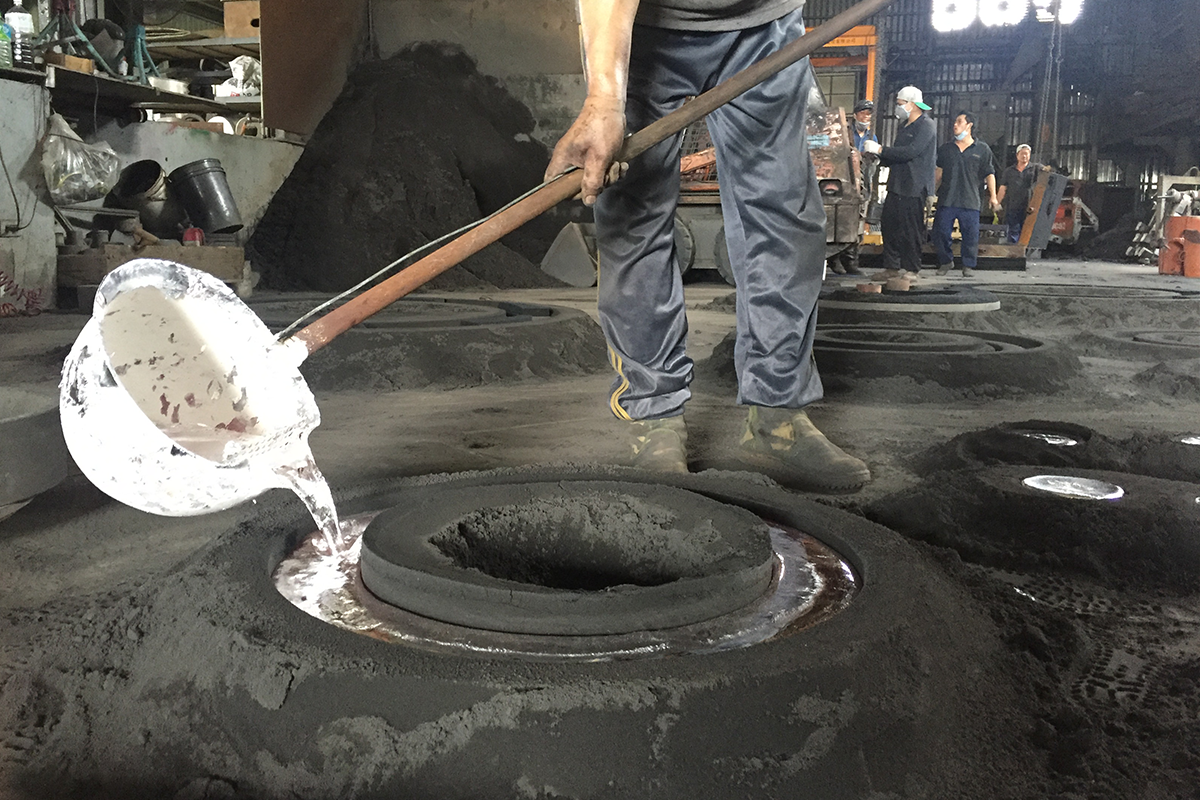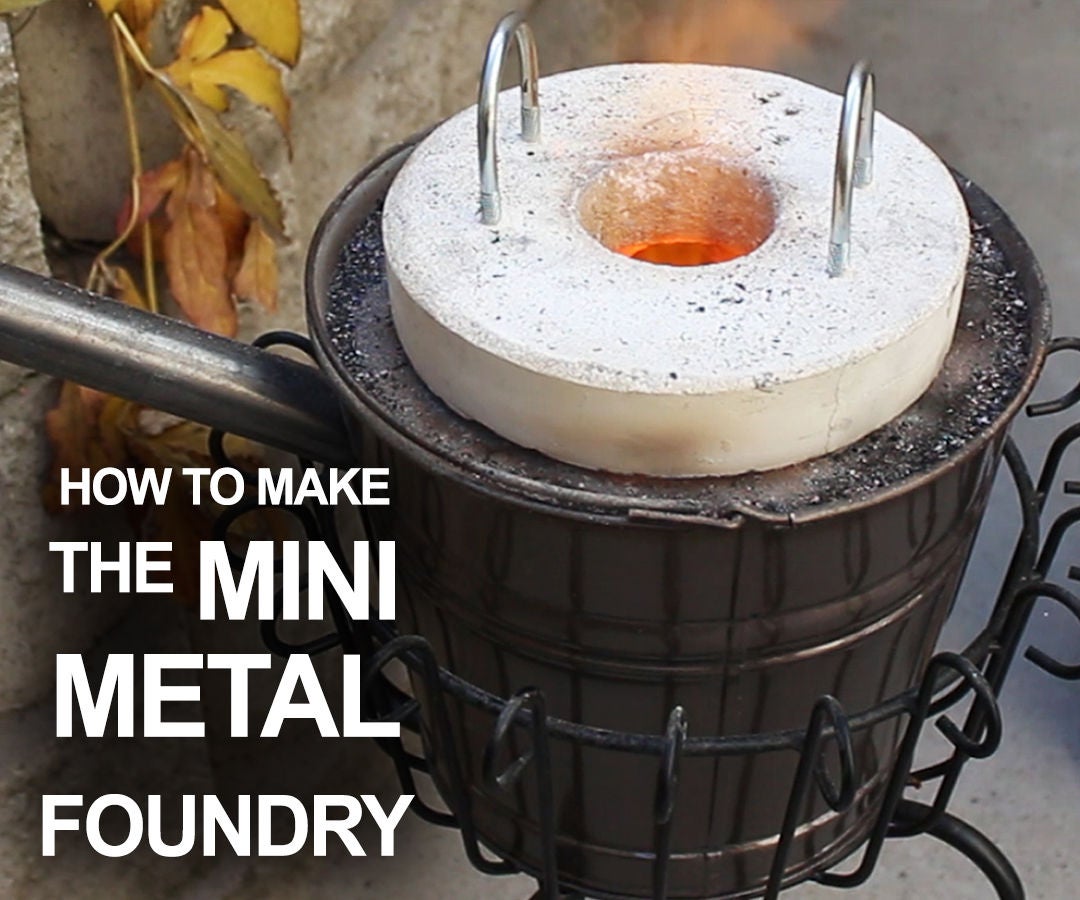Discover how Aluminum Foundry Wisconsin helps create better casting outcomes
Wiki Article
A Comprehensive Overview to the Methods Used in Aluminum Foundry Workflow
Aluminum Foundry procedures use numerous casting techniques, each with distinctive procedures and applications. Understanding these methods is essential for enhancing production and achieving wanted product residential or commercial properties. From sand casting to pass away spreading, the options readily available can substantially affect effectiveness and price. As technology breakthroughs, so as well do these techniques, triggering a more detailed evaluation of their benefits and restrictions. The ramifications of these advancements require further expedition.Introduction of Aluminum Casting Techniques
Aluminum casting strategies include a selection of techniques utilized to shape liquified Aluminum into preferred types. These techniques are crucial in the production and engineering fields, offering flexibility and performance. Major strategies include die spreading, which utilizes high-pressure to infuse Aluminum into mold and mildews for precision parts, and gravity spreading, where liquified Aluminum is poured right into molds under the impact of gravity, enabling bigger, less complicated shapes. Financial investment casting, one more approach, entails developing a wax pattern coated in ceramic, supplying high dimensional precision for complex designs. Furthermore, permanent mold spreading uses multiple-use molds, improving manufacturing efficiency and lowering waste. Each method accommodates specific applications, balancing variables such as cost, manufacturing quantity, and product residential or commercial properties. As sectors evolve, developments in these casting methods continue to improve the high quality and efficiency of Aluminum components, positioning them as important procedures within modern-day manufacturing.Sand Casting: Process and Applications
Sand spreading is a widely used technique in the Foundry market, understood for its simpleness and adaptability. Aluminum Foundry. This process involves producing a mold from a mixture of sand and a bonding agent, usually clay. The mold is developed around a pattern, which is a replica of the wanted final item. When the mold and mildew is prepared, molten Aluminum is put right into the tooth cavity, permitting it to strengthen into the wanted shapeAmong the main advantages of sand casting is its capacity to generate complicated geometries and huge parts, making it suitable for various applications, consisting of automotive components, equipment parts, and attractive things. In addition, sand casting can fit different Aluminum alloys, enhancing its flexibility. The process is economical for reduced to tool manufacturing runs, as it does not need expensive tooling. Overall, sand spreading continues to be a basic method in Aluminum Foundry operations as a result of its performance in conference diverse production requirements.
Die Spreading: Benefits and Limitations
While die casting is frequently compared to sand casting, it offers distinctive advantages and limitations that make it ideal for particular applications in the Aluminum Foundry market. One significant benefit of die casting is its capacity to create complex forms with high dimensional accuracy and excellent surface area finish. This procedure is specifically helpful for mass production, as it permits faster cycle times and decreased labor costs. In addition, die casting decreases material waste, boosting overall effectiveness.Nonetheless, die casting additionally has constraints. The preliminary tooling costs are reasonably high, making it much less practical for tiny production runs. Additionally, the procedure is finest suited for metals with low melting points, which can limit material options. Pass away casting is also restricted regarding the maximum dimension of the components produced, as larger parts may require different techniques. Balancing these factors is crucial for establishing the proper application of die spreading in the Aluminum Foundry industry.
Financial Investment Spreading: Precision and Detail
Investment spreading is a very accurate production procedure that permits intricate styles and great information in Aluminum components. This technique provides considerable advantages, consisting of boosted dimensional precision and decreased machining needs. Its applications span numerous sectors, highlighting its convenience and effectiveness in producing complex parts.Refine Overview
The financial investment casting procedure is renowned for its capacity to create high-precision elements and elaborate shapes. This technique begins with producing a wax pattern, which is then covered with a ceramic covering. When the covering sets, the wax is disappeared, leaving a specific tooth cavity for the molten metal. The Aluminum is put right into this tooth cavity, catching the fine details of the initial pattern. After cooling down, the ceramic covering is broken away, revealing the cast part. Any kind of necessary completing work, such as machining or surface area treatment, is performed to accomplish the preferred specifications. This process is particularly advantageous for complex geometries that are hard to accomplish with conventional spreading strategies, making certain both quality and precision in the end product.Benefits of Precision
Accuracy in investment casting offers significant advantages, making it a preferred option for producing complex parts. This method enables the manufacturing of elaborate forms with tight resistances, minimizing the need for comprehensive machining and decreasing material waste. The capacity to accomplish high dimensional precision translates to a remarkable fit and surface, boosting the overall top quality of the final item. Additionally, financial investment spreading enables the unification of fine details, which is crucial for elements needing detailed styles. The procedure also supports the usage of different Aluminum alloys, better expanding its applicability. On the whole, the accuracy offered by investment spreading not just improves the visual and practical characteristics of parts yet additionally adds to improved efficiency in production cycles.Applications in Market
While many producing processes exist, investment casting attracts attention for its adaptability across numerous sectors, particularly in fields requiring high accuracy and in-depth parts. This spreading approach is commonly utilized in aerospace, vehicle, and medical fields, where tight resistances and elaborate styles are necessary. For example, aerospace parts profit from investment casting's capacity to produce complicated geometries that decrease weight without compromising structural stability. In a similar way, the automobile industry utilizes this strategy to manufacture engine components that need sturdiness and accuracy. In the clinical industry, financial investment casting allows the manufacturing of surgical tools and implants that should satisfy rigorous high quality criteria. On the whole, financial investment casting greatly improves product efficiency and reliability, making it an important technique in modern-day manufacturing applications.Comparison of Casting Approaches
 The comparison of casting approaches discloses unique benefits and applications across numerous techniques - Aluminum Foundry. Sand spreading is frequently commemorated for its flexibility and cost-effectiveness, while die spreading is identified for its efficiency and accuracy in generating high quantities. Financial investment casting, previously reviewed, showcases its unique capability to produce detailed layouts, even more emphasizing the varied abilities of each approach in Aluminum Foundry procedures
The comparison of casting approaches discloses unique benefits and applications across numerous techniques - Aluminum Foundry. Sand spreading is frequently commemorated for its flexibility and cost-effectiveness, while die spreading is identified for its efficiency and accuracy in generating high quantities. Financial investment casting, previously reviewed, showcases its unique capability to produce detailed layouts, even more emphasizing the varied abilities of each approach in Aluminum Foundry proceduresSand Casting Advantages
Sand casting uses numerous advantages when compared to various other casting approaches, making it a recommended selection in various manufacturing applications. Among the key advantages is its affordable, as the materials called for, such as sand and steel, are low-cost and conveniently offered. Furthermore, sand spreading allows for higher style versatility, making it possible for the manufacturing of intricate shapes and large components that may be challenging to achieve with various other techniques. The process additionally suits a wide array of steel alloys, consisting of Aluminum, improving its convenience. Sand mold and mildews can be conveniently repaired or modified for succeeding casts, making it reliable for both little and big manufacturing runs. On the whole, these benefits add to sand casting's popularity in the Foundry market.Die Spreading Techniques
Pass away casting techniques stick out as an extremely effective method for generating steel components, specifically when compared to conventional spreading techniques like sand casting. This procedure includes forcing liquified Aluminum into a mold under high stress, leading to accurate measurements and a smooth surface finish. Unlike sand spreading, which requires considerable completing work, pass away casting minimizes post-production processing, enhancing total productivity. In addition, die casting can suit intricate geometries, permitting detailed styles that would certainly be challenging to attain through various other techniques. The rate of manufacturing is an additional advantage; pass away casting can create large quantities of components in a shorter timeframe. Overall, the combination of performance, accuracy, and style versatility makes pass away casting a favored selection in modern Aluminum Foundry procedures.Financial Investment Casting Applications
Financial investment casting, typically described as lost-wax spreading, supplies distinct advantages over other casting techniques, especially relative to accuracy and surface area coating. This strategy permits the creation of intricate shapes and fine details that are challenging to accomplish with sand or die spreading. In addition, financial investment spreading generates parts with premium dimensional precision, reducing the need for comprehensive machining. Its flexibility makes Resources it appropriate for various industries, including aerospace, automobile, and medical devices, where high-quality components are vital. Compared to die spreading, which can be restricted by mold complexity, financial investment spreading succeeds in generating intricate geometries without endangering structural stability. As a result, the selection of financial investment spreading ends up being increasingly favorable for applications requiring high efficiency and dependability.
Top Quality Control in Aluminum Foundry Workflow
How can Aluminum foundries assure the best quality in their items? Implementing rigorous quality control procedures is vital. Foundries commonly begin by establishing clear requirements for the Aluminum alloys used, guaranteeing they meet sector standards. Continuous tracking during the melting and putting procedures helps recognize any inconsistencies from preferred chemical make-ups.Aesthetic examinations and non-destructive testing techniques, such as ultrasonic or X-ray exams, are typically utilized to detect interior issues or disparities in castings. In addition, analytical process control methods track manufacturing data, permitting very early recognition of possible problems.
Routine training and qualification of personnel in quality control practices are crucial for keeping high standards. Applying responses loopholes from consumers can aid shops refine their processes and enhance item quality. By sticking to these practices, Aluminum foundries can consistently deliver premium products that surpass or satisfy customer expectations.
Future Trends in Aluminum Spreading Technology
Advancements in Aluminum casting technology are positioned to improve the market landscape, building upon well established quality assurance methods. Innovations such as additive manufacturing and clever Foundry services are emerging, making it possible for improved layout versatility and lowered waste. The integration of expert system and artificial intelligence in process surveillance permits real-time modifications, improving efficiency and useful link product top quality.Sustainability stays an essential focus, with an emphasis on reusing scrap Aluminum and reducing power intake. Advanced alloy formulations are being developed to maximize efficiency while decreasing ecological influence. The adoption of automated systems, consisting of robotics for dealing with and putting, guarantees to boost work environment security and precision.
In addition, electronic doubles are obtaining grip, permitting for online simulations that facilitate far better decision-making and anticipating upkeep. As these patterns develop, they will likely create a much more efficient, lasting, and highly advanced Aluminum casting market, setting brand-new criteria for quality and performance.
Frequently Asked Questions
What Precaution Should Be Absorbed Aluminum Foundry Procedures?
In Aluminum Foundry operations, necessary precaution consist of personal protective tools, correct ventilation, routine training, threat analyses, emergency preparedness, and adherence to procedures to mitigate threats related to molten steel and heavy equipment.Exactly How Is Recycled Aluminum Used in Foundry Processes?
Recycled Aluminum is generally used in Foundry processes to minimize ecological impact and production prices. It undergoes melting and refining, enabling manufacturers to create top notch products while conserving energy and lessening waste in the Aluminum lifecycle.What Tools Is Crucial for Aluminum Spreading?
Important devices for Aluminum spreading includes heaters for melting, mold and mildews for shaping, putting ladles, cooling systems, and finishing tools. Each element plays an essential duty in guaranteeing the performance and top quality of the casting process.Just How Do Environmental Regulations Influence Aluminum Foundries?
Environmental regulations greatly influence Aluminum shops by enforcing limitations on discharges and waste monitoring. Conformity needs investment in cleaner modern technologies, which can enhance operational expenses but inevitably promotes sustainability and lowers the ecological footprint of the industry.
What Prevail Problems in Aluminum Castings and Their Solutions?
Usual problems in Aluminum spreadings include contraction, surface area, and porosity blemishes. Solutions include maximizing thaw quality, regulating cooling prices, and employing appropriate mold and mildew layout, making sure much better honesty and performance of the final cast items. Significant strategies consist of pass away casting, which uses high-pressure to infuse Aluminum right into molds for precision components, and gravity casting, where molten Aluminum is put into molds under the influence of gravity, permitting for larger, less intricate shapes. While die spreading is usually contrasted to sand casting, it offers distinct advantages and limitations that make it ideal for particular he has a good point applications in the Aluminum Foundry industry. Sand casting is typically commemorated for its adaptability and cost-effectiveness, while die spreading is recognized for its effectiveness and precision in creating high volumes. Die casting methods stand out as an extremely reliable approach for generating steel components, specifically when contrasted to standard spreading approaches like sand spreading. Compared to die casting, which can be limited by mold and mildew intricacy, investment casting succeeds in generating intricate geometries without endangering architectural integrity.
Significant strategies consist of pass away casting, which uses high-pressure to infuse Aluminum right into molds for precision components, and gravity casting, where molten Aluminum is put into molds under the influence of gravity, permitting for larger, less intricate shapes. While die spreading is usually contrasted to sand casting, it offers distinct advantages and limitations that make it ideal for particular he has a good point applications in the Aluminum Foundry industry. Sand casting is typically commemorated for its adaptability and cost-effectiveness, while die spreading is recognized for its effectiveness and precision in creating high volumes. Die casting methods stand out as an extremely reliable approach for generating steel components, specifically when contrasted to standard spreading approaches like sand spreading. Compared to die casting, which can be limited by mold and mildew intricacy, investment casting succeeds in generating intricate geometries without endangering architectural integrity.Report this wiki page